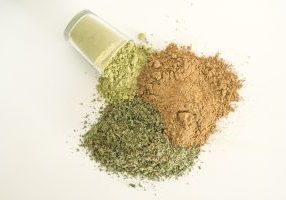Are you new to the world of Kratom? Unsure about what Kratom really is and what it can do for you? Today, we’re going to help you clear up that confusion so you can get a better understanding of this botanical, its current status, and the ways people use it.
When you’re considering trying a product like Kratom, researching it before you start is incredibly important. You should never try something that you don’t have a good foundation of knowledge about, so we will help you get that foundation in place for your first Kratom experience!
What Is Kratom?
Let’s begin by answering this basic question: what is Kratom?
Kratom is a plant. This deciduous tree grows in Asian countries like Borneo, Malaysia, Thailand, Papua New Guinea and more. The tree mostly grows in very warm climates like those present in these areas, but it’s not unheard of to be able to grow Kratom in colder weather areas.
It’s a tropical plant that can grow quite tall; it can even reach heights of over 70 feet! But the interesting part of this tree is not its height, it’s what chemicals are inside of the leaves.
This type of tree is also known as Mitragyna speciosa, because it contains two special compounds called mitragynine and 7-hydroxymitragynine. Those compounds are naturally occurring chemical substances known as alkaloids. Alkaloids are found in many plants, especially flowering plants, including common alkaloids like caffeine, nicotine, and quinine.
Kratom’s Traditional Past
In Southeast Asia, there is a long history of people regularly using Kratom for a variety of reasons. From chewing on the leaves straight off the tree to brewing up a special tea from the leaves or stems, Kratom has been safely used for centuries.
Today, the leaves are typically dried before they are used. Once dried and processed, they can be used as a tea, powder, or in a number of other ways.
How Is Kratom Consumed?
How do you take Kratom?
M. speciosa products are available in a wide variety of ingestion methods. With a plethora of products, from liquid extracts to tea and crushed leaves to capsules, there’s an option to suit pretty much everyone’s preferences. For various reasons, some methods are better than others for different people, so we recommend that you take some time to look into those methods and find what works for you.
How Does Kratom Work?
Before we get too far into this section of today’s guide, we want to be clear that there is still a need for more research about Kratom and how it works. While some studies about this very interesting plant substance have been done, more unbiased and thorough research will be needed to completely understand the intricacies of this amazing botanicals.
Still, there are some things that we already know about Kratom and the compounds found in Kratom.
Both mitragynine and 7-hydroxymitragynine are active alkaloids. These alkaloids interact with receptors in the central nervous system when they are taken. When the alkaloids bind with receptors in the body, the various effects of Kratom occur.
Who Uses Kratom?
Kratom is used by a lot of different people in many walks of life. In fact, you could not categorize people that use Kratom any easier than you could categorize people who love the color blue! There simply isn’t a specific type of person that uses Kratom.
It is estimated by the American Kratom Association that approximately 15 million Americans use Kratom, and this number is surely growing every single day! This includes doctors, nurses, and first responders, as well as lawyers, politicians, teachers, and probably some folks you know!
The point is that anybody can use Kratom. If you’re interested in the effects that Kratom could have on your life, you’re doing the right thing by learning more about this substance. In the end, you may find that it is a great fit for what you are looking for!
Is Kratom Legal?
If you search the word “Kratom” online, you’ll find a slew of results about the dangers of Kratom and statements by the FDA about the risks of Kratom. Unfortunately, Kratom has gained a bad reputation over the past few years due to misinformation, misguidance, and dishonest Kratom vendors.
The simple fact remains that Kratom is legal to take for personal use in most places in the U.S. There are six states and a few counties and cities that have banned Kratom. It is not legal for vendors like us to sell Kratom to you as a medical treatment as it is not meant to treat any specific disorder, but there are no federal laws preventing its sale.
For the past few years, organizations like the American Kratom Association have been working together with Kratom vendors like us to help improve the name that Kratom has among the general population. Kratom, when used properly, is a safe botanical that has truly benefited many lives.
We want to help the world see that, and that is a big part of why we put so much time into creating educational content like this article about the history and usage of Kratom.
The Future of Your Kratom Usage
We hope that you’ve learned a lot from today’s guide to the basics of Kratom! If you browse our site, you’ll find many different strains and varieties of Kratom that may catch your interest.
If you’re still not sure about whether not using Kratom is right for you at this time, we recommend that you check out more of the articles we have on our blog. By continuing your search for knowledge about Kratom, we’re confident that you’ll be able to figure out if Kratom is the right choice for you!











